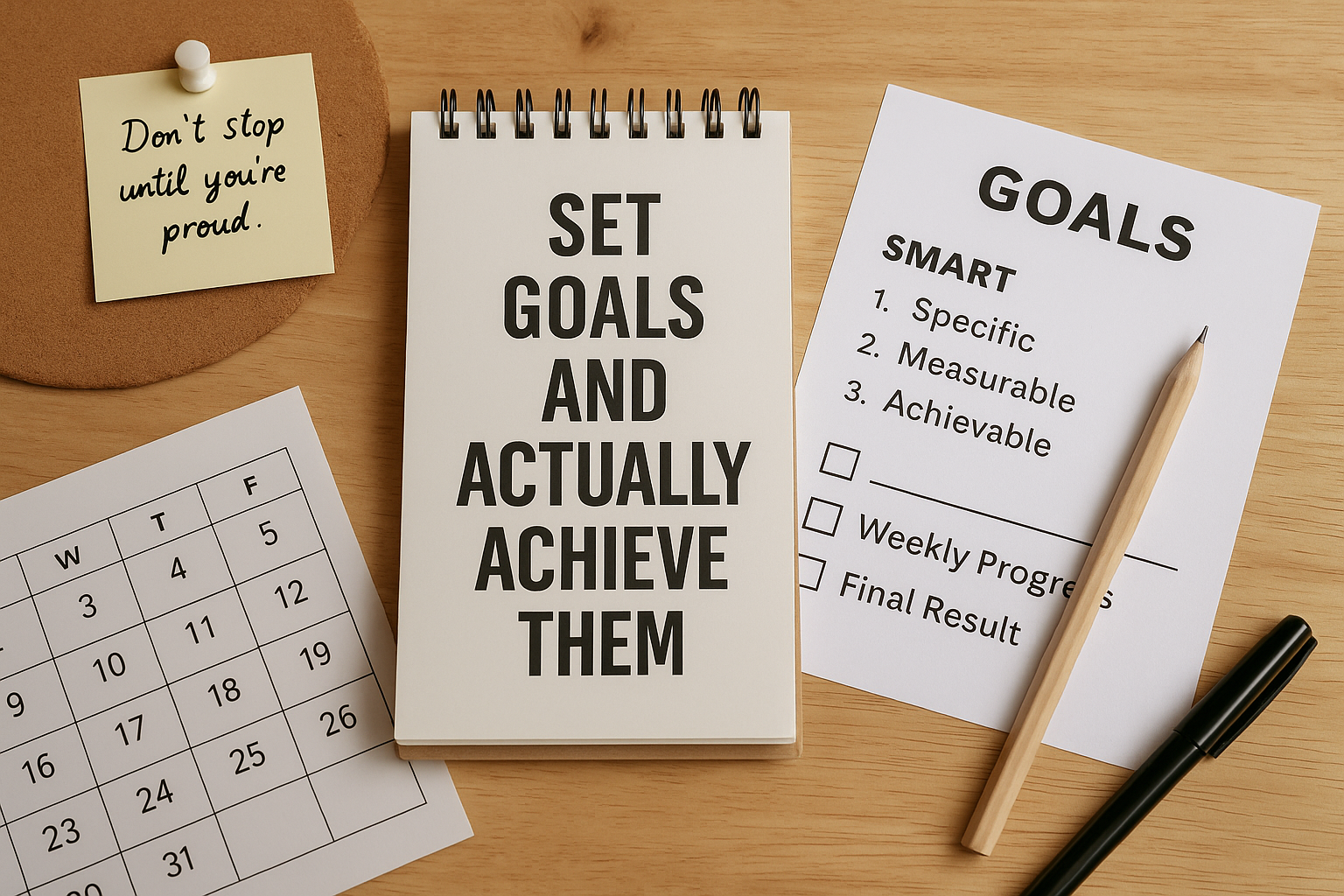Setting goals can be exciting. Achieving them? That’s where most people struggle. Whether it’s building a new habit, changing your lifestyle, or chasing a dream, turning goals into reality requires more than motivation—it takes clarity, structure, and consistency.
In this article, you’ll learn how to set personal goals that actually work—and how to follow through without burning out or giving up.
Why Most People Fail to Reach Their Goals
It’s not about laziness. Often, goals fall apart because they’re:
- Too vague: “I want to be healthier.”
- Too big: “I want to change my life overnight.”
- Not connected to personal values
- Based only on motivation, which fades
- Missing a clear plan or structure
The solution? Set smarter goals and build a system to support them.
1. Start with Your “Why”
Before setting a goal, ask yourself:
- Why does this matter to me?
- How will my life improve if I achieve it?
- What values does this goal support?
When your goal is rooted in purpose, you’re more likely to stay committed, even when it gets tough.
2. Use the SMART Goal Framework
SMART goals are:
- Specific: Clear and well-defined
- Measurable: You can track your progress
- Achievable: Realistic given your time and resources
- Relevant: Aligned with your current priorities
- Time-bound: Has a deadline or timeframe
Example:
❌ Vague: “I want to get fit.”
✅ SMART: “I will walk for 30 minutes, 5 times a week, for the next 3 months.”
3. Break Big Goals into Smaller Steps
Big goals can feel overwhelming. Break them down into bite-sized actions.
For example, if your goal is to write a book:
- Week 1: Write an outline
- Week 2: Write the introduction
- Week 3: Complete chapter 1
- Week 4: Edit what you’ve written
Every small win builds momentum.
4. Create a Visual Roadmap
Use tools like:
- A simple checklist
- A habit tracker
- A calendar with weekly milestones
- A vision board
Visual reminders keep your goals top of mind and help you stay on track.
5. Set Process Goals (Not Just Outcome Goals)
Outcome goals focus on the result: “Lose 10 pounds.”
Process goals focus on the behavior: “Exercise for 20 minutes daily.”
Why it matters: You can control your actions, not always the outcome. Process goals help you build sustainable habits.
6. Build Accountability
When others know your goal, you’re more likely to follow through.
Try:
- Telling a friend or family member
- Joining a group with similar goals
- Hiring a coach or mentor
- Sharing your progress online or in a journal
Accountability adds structure—and support.
7. Make Room for Setbacks
You will face challenges. That’s normal. Plan for it.
Ask:
- What might get in the way?
- How will I respond when things go wrong?
- What’s my backup plan?
Resilience is key to long-term success.
8. Track Your Progress Weekly
Every week, take 5–10 minutes to reflect:
- What worked this week?
- What was hard?
- What needs to change?
- What am I proud of?
Reflection turns effort into learning—and keeps you moving forward.
9. Celebrate Your Wins (Even the Small Ones)
Don’t wait until the finish line to feel good. Celebrate along the way.
Examples:
- Treat yourself to something meaningful
- Write down your progress in a journal
- Share your win with someone you trust
Celebration reinforces the behavior—and boosts motivation.
10. Keep Going, Even When It’s Boring
Every goal has a “dip”—a point where things feel slow, hard, or repetitive.
Here’s what to do:
- Focus on consistency over excitement
- Remind yourself of your why
- Lower the bar (but don’t stop entirely)
Success isn’t about staying excited—it’s about staying committed.
Set Goals That Build the Life You Want
Goals don’t just give you direction—they help you grow. They reveal your values, stretch your limits, and shape your future.
Start here:
- Write down one goal using the SMART framework
- Break it into 3 small steps
- Take action on the first one today
You don’t need perfect conditions—you just need to begin. Every step you take is a vote for the person you’re becoming.
